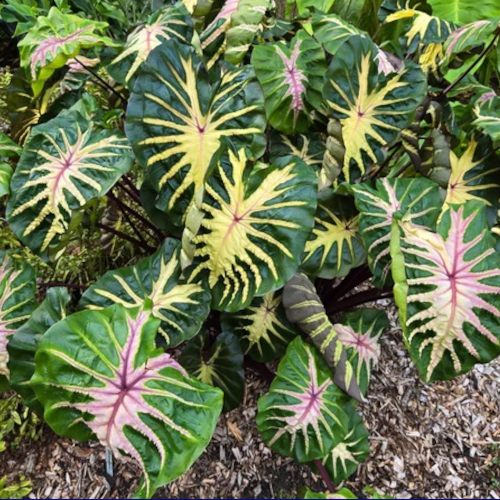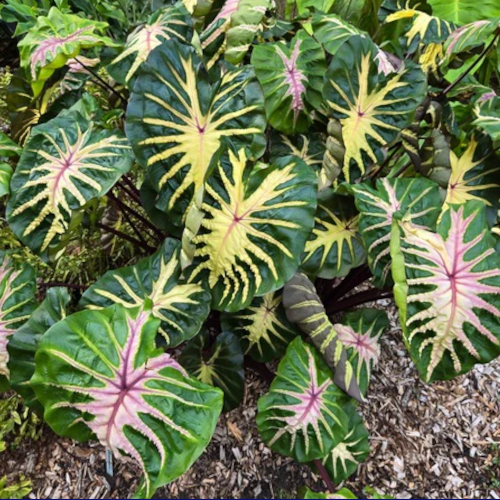The Happy Hosta
Waikiki Elephant Ears
Couldn't load pickup availability
Sold as quart size.
‘Waikiki’ features striking, corrugated green leaves that first appear with a deep, dark underside. As the back transitions from a rich purple to green, the top of each leaf unveils a bold white stripe down the center, accented by a vivid purple spot. This purple hue quickly spreads, overtaking the white and tracing through the leaf’s veins. By the time each leaf is fully grown, both the central pattern and the veins display a dramatic, all-purple finish. In our experience, it takes about two growing seasons for ‘Waikiki’ to reveal its full splendor. This Colocasia variety truly needs to be seen in person to appreciate its exceptional beauty.
- Striking Foliage: The leaves are glossy, deep green with prominent, creamy white centers and vibrant pink veins. This creates a dramatic, multi-toned effect.
- Compact Growth: Unlike some sprawling elephant ear varieties, 'Waikiki' maintains a relatively compact, tidy, and clumping habit, typically reaching 3 to 3.5 feet tall and wide.
- Disease Resistance: This cultivar is bred for improved disease resistance, making it easier to grow and maintain.
- Versatile Uses: Its manageable size and striking appearance make it ideal for containers on patios or balconies, as well as for planting in garden beds or borders.
- Light: Prefers full sun to partial shade, and can even tolerate semi-shade. For the most vibrant coloration, bright indirect light is ideal.
- Soil: Thrives in rich, well-draining soil that retains moisture. A slightly acidic to neutral pH (6.0-7.0) is ideal. Amending with compost or other organic matter is beneficial.
- Watering: Requires consistent moisture; water regularly to keep the soil damp but not waterlogged. Increase watering during hot, dry spells.
- Humidity: Enjoys high humidity levels. In drier climates, consider misting the leaves or placing a humidity tray nearby.
- Fertilizing: Benefits from regular feeding during the growing season (spring through summer). Use a balanced, water-soluble fertilizer or a fertilizer high in nitrogen every 2-4 weeks, or use a slow-release granular fertilizer at the beginning of the season.
- Hardiness: Cold hardy in USDA Zones 7b-11, able to withstand freezing temperatures down to 5°F. In colder zones, the plant should be brought indoors or the corms (tubers) stored in a cool, dry place over winter.
- Pests and Diseases: Generally pest-resistant, but can be susceptible to spider mites in dry conditions, aphids, mealybugs, and root rot from overwatering. Ensuring proper drainage and humidity can help prevent these problems.

